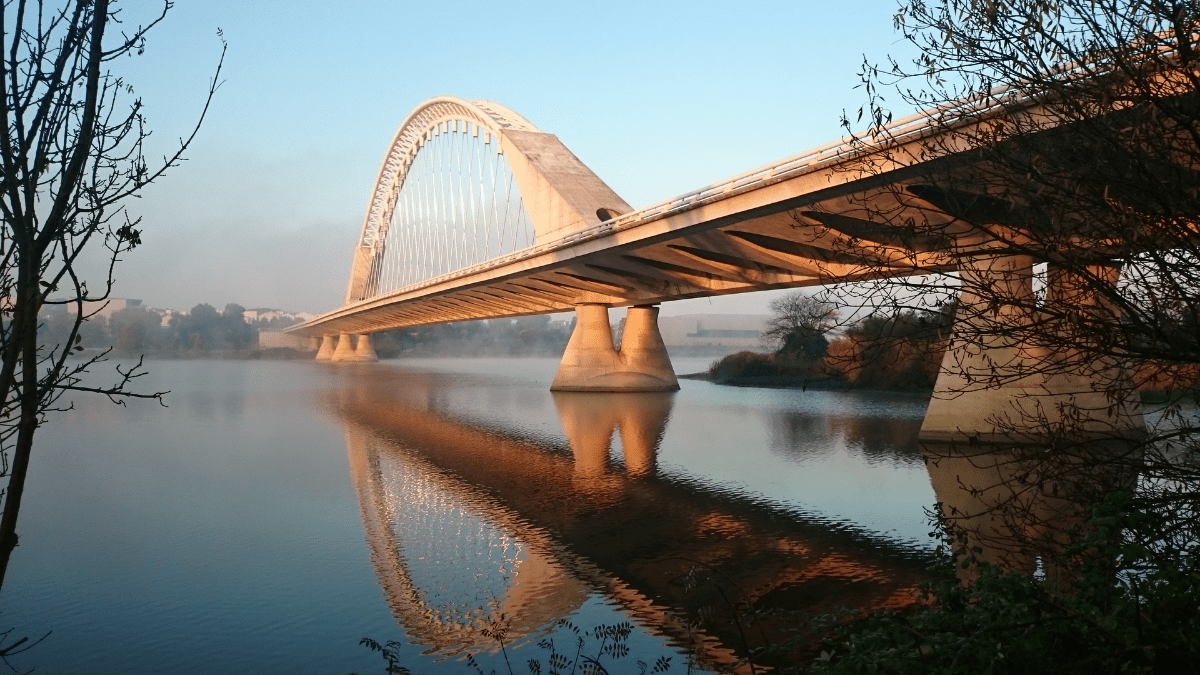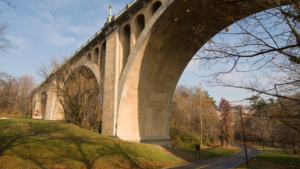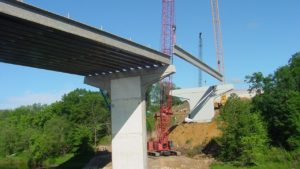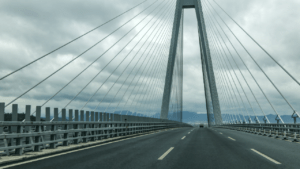Types of Bridges can range from modest constructions to massive, eye-catching pieces of art – and everything in between. A bridge serves its sole purpose as long as it transports us across a gap. Types of bridges are an important classification in civil engineering. In today’s blog, we are going to learn about different types of bridges in detail.
Types of bridges in civil engineering
The types of bridges in civil engineering are broadly classified as follows
- Arch Bridge
- Beam bridge
- Cantilever bridge
- Suspension bridge
- Cable-Stayed Bridge
- Tied-Arch Bridge
- Truss Bridge
Let’s dig deeper into each of the types now.
Related posts from vincivilworld
Arch Bridge – Types of Bridges
- A dead load of a bridge is the weight of the bridge itself, plus the weight of whatever it is carrying (the live load). The forces of load and gravity, which would otherwise send a bridge sliding downhill, are used to hold an arch bridge aloft instead.
- An arch bridge works by channelling gravity’s downward force into the structure’s centre — toward a central stone known as the keystone — rather than straight down.
- Compression is the principle that allows the arch below to support the surface, or deck, above it.
- Temperature changes can destabilise fixed arch bridges, hence the arch design is occasionally changed with hinges at each base and even the span’s centre.
- This allows longer arch bridges to adjust to material expansion and contraction when temperatures fluctuate.
Also, read Bridge components explained – Types and functions.
Beam Bridge – Types of bridges
The beam bridge was the first form of bridge ever created due to its simplicity. It is still the most cost-effective to construct. All you need is a crossbeam that spans the gap and is supported at each end by an abutment. A girder bridge is a form of beam bridge that uses steel girders for reinforcement.
- Gravity presents a greater issue when creating a bridge since, unlike a building, the majority of the space beneath it is empty.
- To resist gravity and bear the full load, a beam bridge might be supported merely by two abutments, one at each end.
- But there’s a catch with beam bridges: the longer a bridge is and the more people, cars, and other objects it carries, the heavier the entire weight becomes.
- The more abutments on a beam bridge are spaced apart, the less stable the structure becomes.
- You may make a long, stable bridge by putting supports in the middle, known as piers or stanchions, and connecting sections between them.
- The Yolo Causeway in Sacramento, California, is 3.2 miles long, and the Lake Pontchartrain Causeway in Louisiana is 24 miles long.
- The force of compression drives the weight inward onto piers in the middle of the bridge in beam bridges.
- Simultaneously, the tension pulling or stretching force pulls the load outward toward the bridge’s abutments on both ends.
Also read: Highway Engineering- Definition, Importance and Construction Details
Cantilever Bridge Types
Some bridge types use Cantilever construction is used on some bridges.
- This design uses a vertically anchored pillar to support a horizontal deck that extends out from one or both sides across the span.
- Both the above and below are frequently used to support the load.
- A good example of cantilever construction is a diving board or platform.
Suspension Bridge Types
These bridge types are exactly what they sound like: they’re supported by vertical pillars or pylons that are linked by suspension cables.
- Smaller, vertical suspenders are attached to these main cables and use tension to hold the bridge deck up.
- Tension is the main force that sustains these types of bridges.
- Despite the fact that the original suspension bridges were composed of simple ropes supporting wooden planks, the suspension technique now allows for vast spans across wide canals.
- However, because these bridges are only attached to the ground in a few locations, they might shake when heavy traffic passes beneath them.
- Vibrations can be caused by wind or movement across a bridge.
- When these reach a specific frequency, resonance occurs, which is the same mechanism that causes a glass to shatter when a trained vocalist hits a high enough note.
- Bridge crossings can be disrupted and collapsed if vibrations are strong enough.
- Torsion, a twisting force commonly generated by external variables such as wind, can also impact these bridges, causing unsafe movement.
- Travellers can be thrown off a bridge if the surface twists significantly while they are on it.
- While torsion causes tension in a vertical plane, shear causes stress in a horizontal plane.
- It occurs when opposing environmental pressures act on a single, fixed component of a bridge, causing it to break like a stick between two hands.
Also read: Cofferdams – Types & Construction methods
Cable-Stayed Bridge
- A suspension bridge with a cable-stayed bridge connects the crossbeam or bridge deck directly to pillars or towers.
- There is no main cable, only a slew of vertical suspenders attached to the tower’s summit.
- Tension is used by these suspenders to keep the bridge deck solid and in place.
Tied-Arch Bridge
- The qualities of an arch bridge and a suspension bridge are combined in a tied-arch bridge.
- It supports an arched structure with horizontal force from both sides, similar to a normal arch bridge.
- Instead of supporting the building from below, the arch rises over the road, with vertical ties descending to provide additional decking support.
- Because they resemble a bow from the side, these are sometimes known as bowstring bridges.
- This bow supports the weight and keeps the bridge stable by combining the tension of its vertical cables with the compression of the arch.
Also read: Golden Gate Bridge: Design and 2 Main Issues
Truss Bridge
- The load on a truss bridge is distributed across a succession of tiny sections that are joined together.
- Bridge trusses are typically formed by structural beams for smaller bridges or box girders for bigger bridges, and are joined in a sequence of triangles by welded or riveted joints.
- The bridge is held up by tension from vertical steel or timber supports, while compression from diagonal truss supports adds stability by directing the weight toward the centre, similar to an arch.
That’s it about the main types of bridges. Each of these has advantages and disadvantages. We need to decide on the type of bridge based on the requirements.
Let me know in the comments if you need any further information.
Happy learning!









3 comments
Comments are closed.